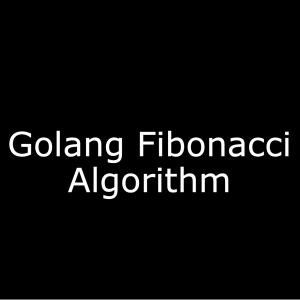Golang Fibonacci Algorithm
What is Fibonacci Algorithm?
The Fibonacci algorithm is a mathematical algorithm that generates a sequence of numbers known as the Fibonacci sequence. The sequence starts with 0 and 1, and each subsequent number is the sum of the two previous numbers in the sequence.
The first few numbers in the sequence are:
0, 1, 1, 2, 3, 5, 8, 13, 21, 34, 55, 89, 144, 233, 377, 610, 987, 1597, 2584, 4181, 6765, 10946, 17711, 28657, 46368, 75025, 121393, 196418, 317811, ...
The Fibonacci sequence has many interesting mathematical properties and frequently occurs in nature, science, and technology. The Fibonacci algorithm is often used to solve problems in computer science, such as generating random numbers and searching and sorting data.
What is the use of Fibonacci Algorithm?
The Fibonacci sequence and related algorithms are used in various fields, including mathematics, computer science, finance, and art. Some typical applications of Fibonacci include:
Mathematical and scientific research: The Fibonacci sequence has many interesting mathematical properties and relationships studied in various mathematics fields, such as number theory and combinatorics. In science, Fibonacci numbers and patterns are found in various natural phenomena, such as the arrangement of leaves on a stem, branching patterns in trees, and the spiral shapes of shells.
Computer algorithms: The Fibonacci sequence and related algorithms are used in computer science to solve problems, such as generating random numbers, searching and sorting data, and optimizing code performance.
Finance and trading: Fibonacci numbers and ratios are used in finance and trading to identify potential trends and support and resistance levels in financial markets. This is known as Fibonacci retracement and is used by traders to make trading decisions.
Art and design: Fibonacci numbers and the related golden ratio are often used in art and design to create aesthetically pleasing compositions and proportions, such as in the design of buildings, furniture, and other objects.
Overall, the Fibonacci sequence and related algorithms have many diverse and exciting applications in different fields and continue to be an essential area of study and research.
The Example of Golang Fibonacci Algorithm
package main import "fmt" func fibonacci(n int) int { if n <= 1 { return n } return fibonacci(n-1) + fibonacci(n-2) }func main() { for i := 0; i < 10; i++ { fmt.Print(fibonacci(i), " ") } }




